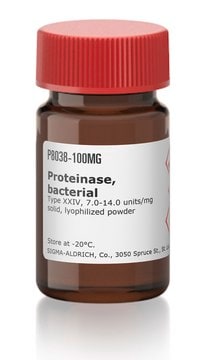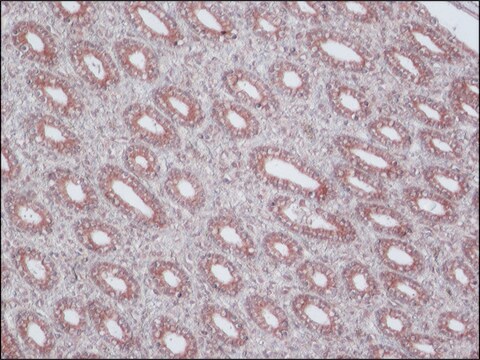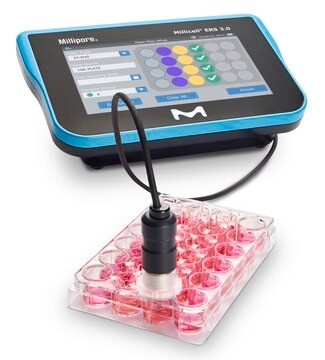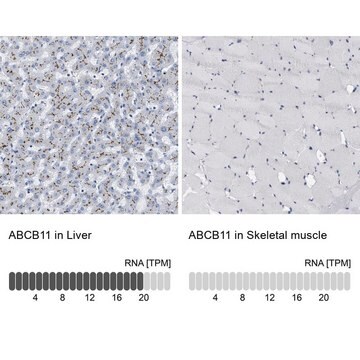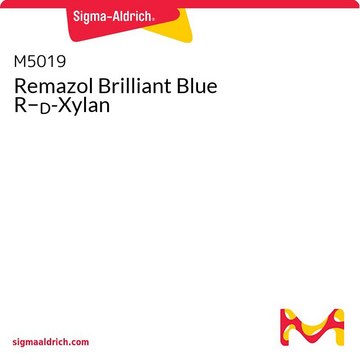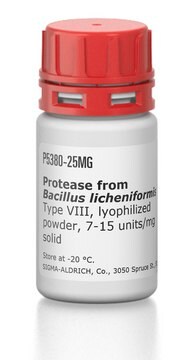Wichtige Dokumente
M7317
Monoclonal Anti-MDR3 P-Glycoprotein antibody produced in mouse
250 μg/mL, clone P3II-26, tissue culture supernatant
Synonym(e):
Anti-ABC21, Anti-GBD1, Anti-ICP3, Anti-MDR2, Anti-MDR2/3, Anti-MDR3, Anti-PFIC-3, Anti-PGY3
About This Item
Empfohlene Produkte
Biologische Quelle
mouse
Qualitätsniveau
Konjugat
unconjugated
Antikörperform
tissue culture supernatant
Antikörper-Produkttyp
primary antibodies
Klon
P3II-26, monoclonal
Speziesreaktivität
human
Konzentration
250 μg/mL
Methode(n)
immunocytochemistry: 1:20-1:50 using acetone-fixed cytospin preparations
immunohistochemistry (formalin-fixed, paraffin-embedded sections): suitable (not suitable for human tissues)
immunohistochemistry (frozen sections): 1:20 using acetone-fixed sections
western blot: suitable
Isotyp
IgG2b
UniProt-Hinterlegungsnummer
Versandbedingung
dry ice
Lagertemp.
−20°C
Posttranslationale Modifikation Target
unmodified
Angaben zum Gen
human ... ABCB11(8647) , ABCB4(5244)
Allgemeine Beschreibung
Spezifität
Immunogen
Biochem./physiol. Wirkung
Physikalische Form
Haftungsausschluss
Sie haben nicht das passende Produkt gefunden?
Probieren Sie unser Produkt-Auswahlhilfe. aus.
Lagerklassenschlüssel
10 - Combustible liquids
WGK
WGK 3
Flammpunkt (°F)
Not applicable
Flammpunkt (°C)
Not applicable
Hier finden Sie alle aktuellen Versionen:
Besitzen Sie dieses Produkt bereits?
In der Dokumentenbibliothek finden Sie die Dokumentation zu den Produkten, die Sie kürzlich erworben haben.
Artikel
We presents an article on ABC Transporters and Cancer Drug Resistance
Unser Team von Wissenschaftlern verfügt über Erfahrung in allen Forschungsbereichen einschließlich Life Science, Materialwissenschaften, chemischer Synthese, Chromatographie, Analytik und vielen mehr..
Setzen Sie sich mit dem technischen Dienst in Verbindung.
